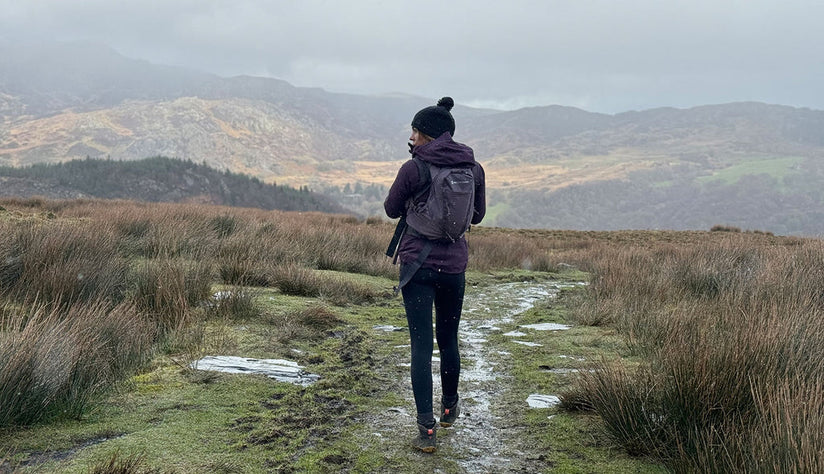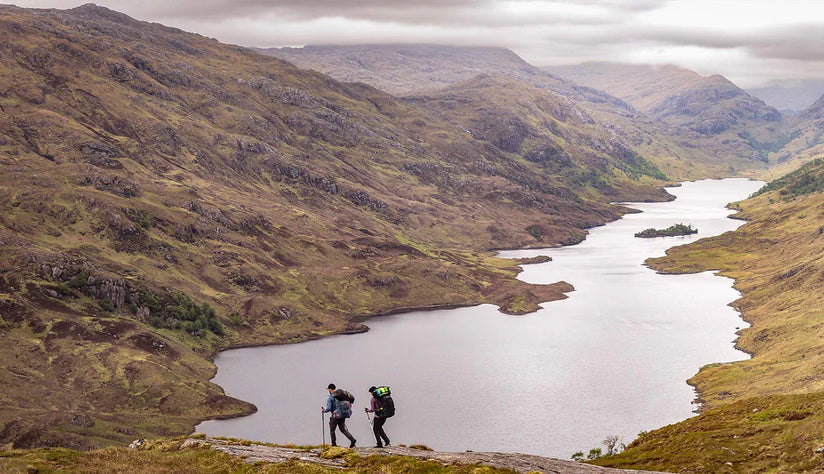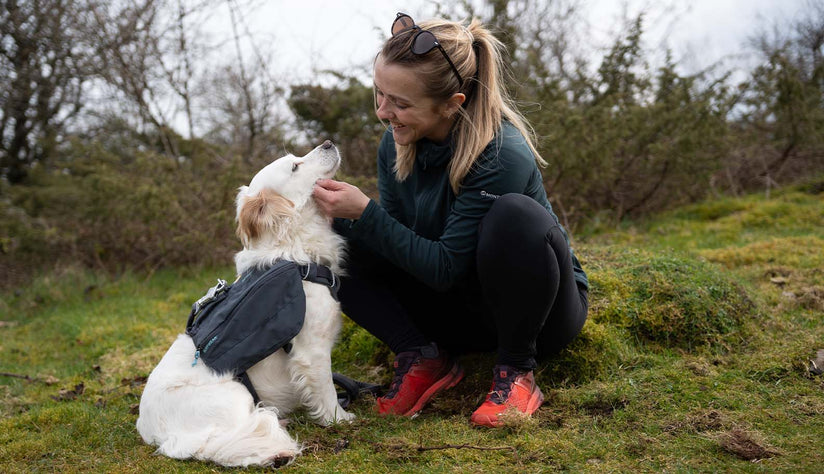The 70th anniversary of the first ascent of Everest was officially marked on the 29th May, 2023. The legacy of this pioneering achievement in mountaineering lives on, with hundreds now attempting to follow in Edmund Hillary and Tenzing Norgay’s footsteps each year.
Of course, a lot has changed since this legendary summit in 1953. Alongside recognition of the wider community involved in helping mountaineers successfully conquer mountains such as Everest, there is now also far greater awareness about the environmental impact involved.
These are just a few of the topics covered in a recent event hosted by several trusts and charities that came together to mark this anniversary. A special evening offering an opportunity to look ahead to the next, more responsible, chapter of this iconic mountain. In attendance at one of these events was Montane E-Commerce Executive Olivia Jackson, who has a special connection to Everest. Keep reading to discover her story and hear her thoughts...

My link to the mountain
I'm Olivia Jackson an E-Commerce Exec for Montane. I have always wanted to work in the outdoor industry because being outside and in the mountains is what drives me in life and keeps me grounded.
As a family member of one of the British Mountaineers that was part of the Everest team in 1953, I was invited down to the Royal Geographical Society in London on the 13th of June for a special tea party and evening event where we would hear from several inspirational speakers.
The reason I was at this event is all thanks to my grampa John A. Jackson. He was the 1st reserve on the Everest team in 1953. He was also part of the team that got up to camp 5 (out of 6) on the first ascent of Kanchenjunga (3rd highest mountain in the world) in 1955. Alongside taking on the world’s biggest mountains, he was director of Plas Y Brenin in North Wales for 16 years and was part of setting up the Duke of Edinburgh award. He knew the climbing world inside and out and he was passionate about championing young climbers and inspiring the next generation.
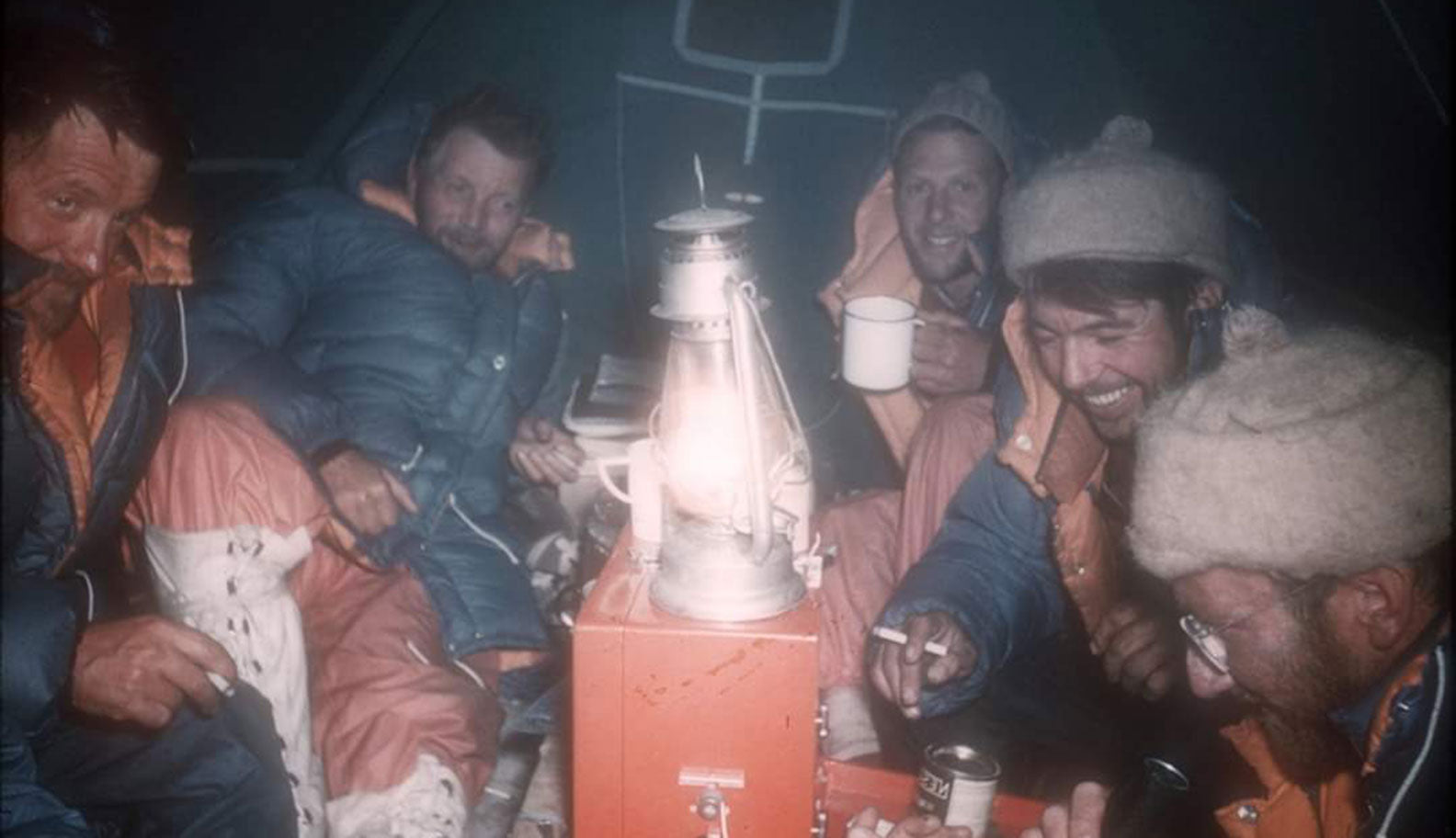
(Camp on Kanchenjunga before the summit push, John Jackson, Tom McKinnon, Joe Brown, Charles Evans, and George Band)
I have always been inspired by him, and it’s probably why I have such a great love for the outdoors. Although my interests lie less in conquering the highest summits and more with experiencing everything I can, whether that's Munro bagging, trekking through the Andes or bikepacking in Europe.
Significantly, he took the majority of the photography on the Kanchenjunga expedition with his various film cameras. I now own this full collection of cameras (which is extensive) and am trying my best to learn about them and do my own film photography.
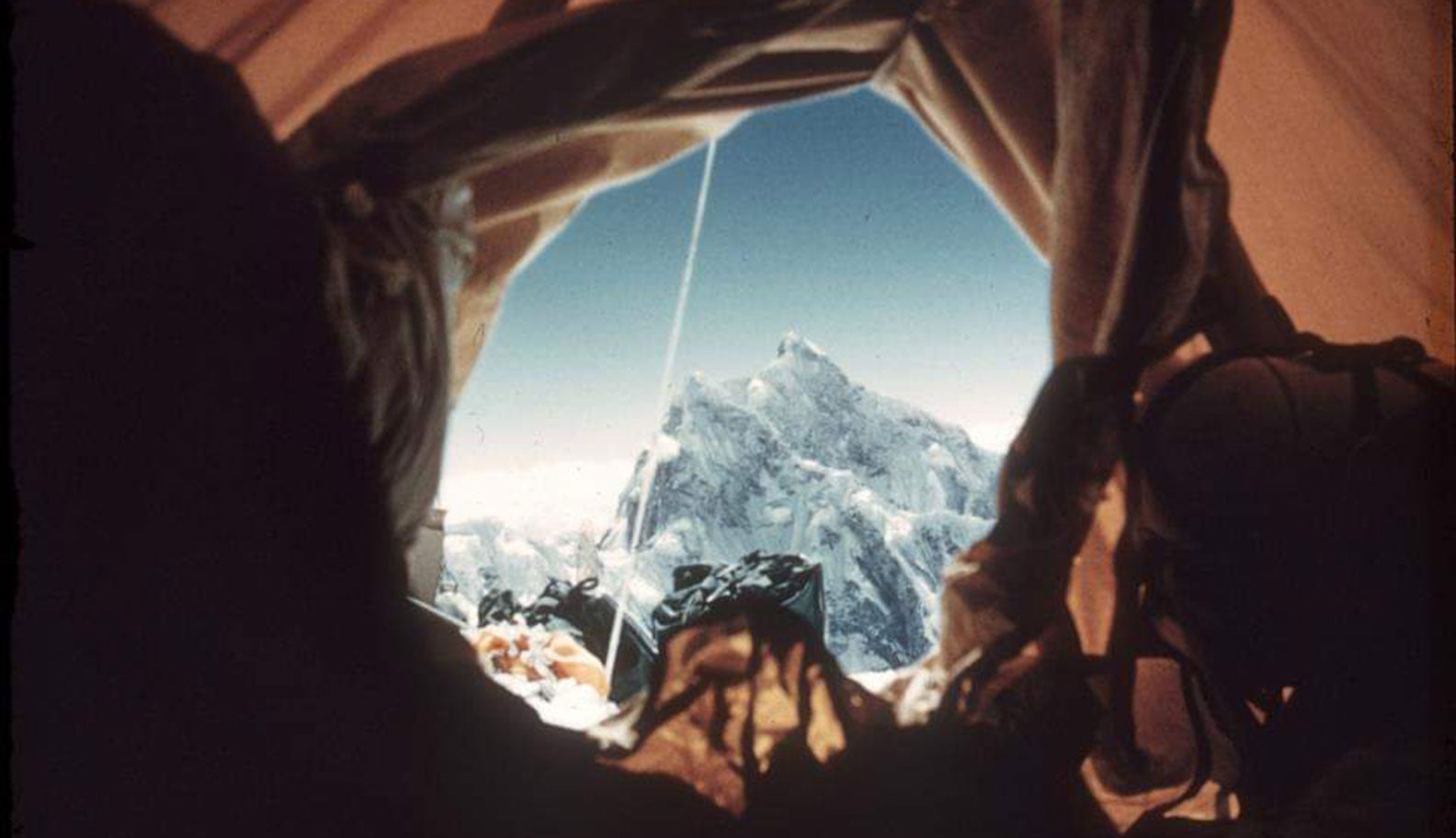
(In the tent on camp 5 Kanchenjunga 1955)
“Be Great, and make others great!” - Tenzing Norgay
The theme of this year's anniversary was that of collaboration. The basic premise of this is that it takes an entire team to achieve such incredible mountaineering feats and that we should recognise everyone’s role in making the Everest summit happen. The efforts of the rest of the team are ultimately all invaluable and each contributed to enabling Edmund Hillary and Tenzing Norgay to summit Everest successfully. This includes the porters, the sherpas and the medical crew, as well as information provided by the Swiss climbing team following their unsuccessful trip in 1952.
Whilst at the event, I spoke to another Everest family member Harriet Tuckey. Harriet is the daughter of Griffith Pugh and is the author of the book “Everest The First Ascent: The untold story of Griffith Pugh, the man who made it possible”. Significantly, Griffith’s medical and scientific knowledge in regards to the use of oxygen, clothing fluid intake and acclimatisation, helped the team to their successful ascent. Harriet wrote this book to ensure the world knew of the part he played and to encourage future expedition accolades to include the other team members' efforts, not only the people who manage the final push. This really resonated with me, and brought home just how much of a team effort it is to take on mountains of this scale.
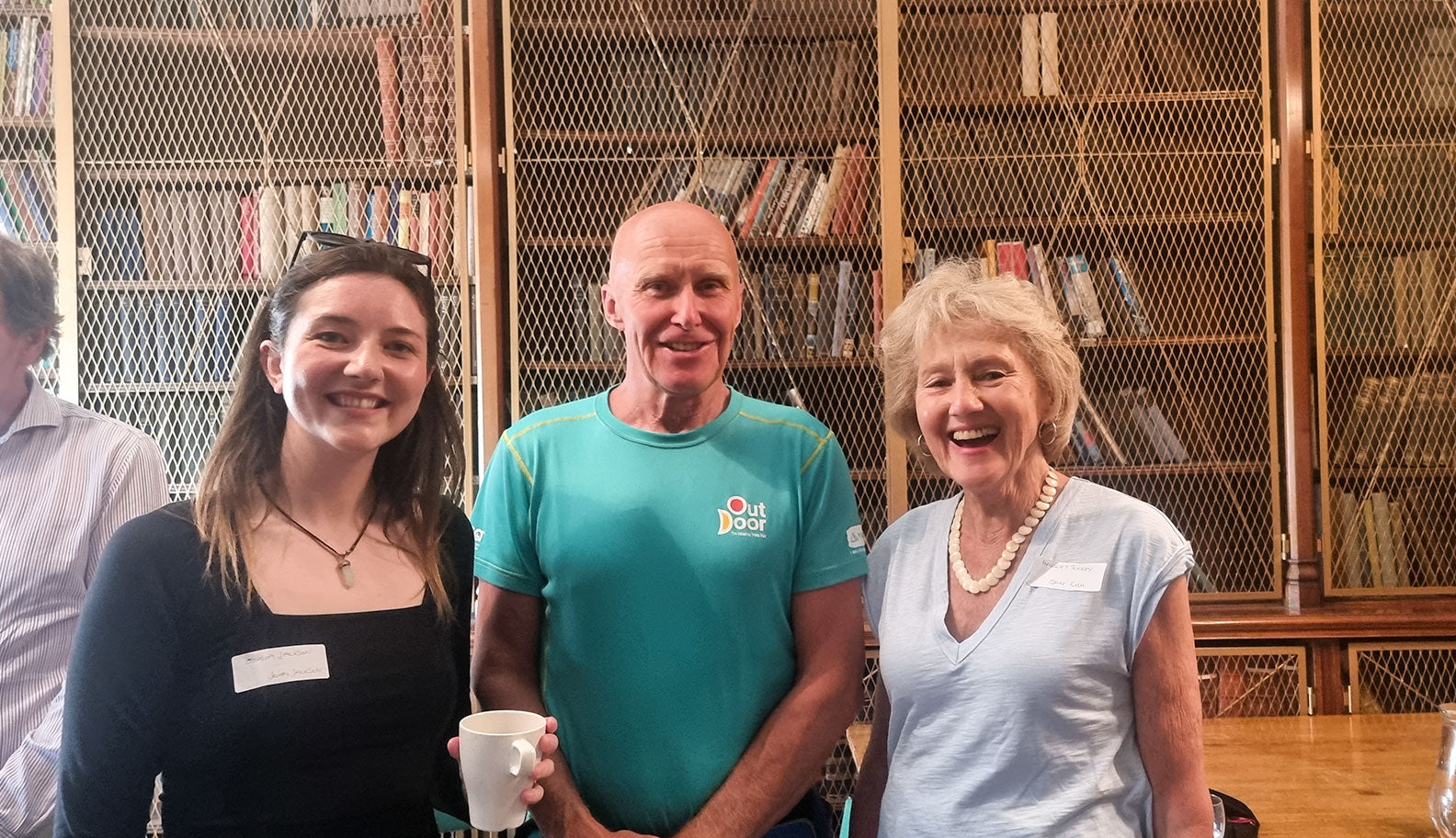
(Myself, Alan Hinkes and Harriet Tuckey at the Family members tea party)
The evening rang in inspirational talks from a variety of people connected to Everest. This included Sue Leyden (Sir John Hunt’s daughter - John was the official leader of the successful 1953 Everest expedition summit), Hillary and Tenzing’s sons, and Stephen Venables who was the first British person to summit Everest without the aid of oxygen.
Ex-British veteran Hari Magar came on to do one of the final talks of the evening. For those unfamiliar, Hari earlier this year became the first double above-the-knee amputee to climb Mount Everest. I found his talk and unbelievable feat of endurance to be particularly inspiring, especially given that the ban on blindness and double amputees taking on Everest was only lifted in recent years (something I was unaware had even been in place.)

Environmental Impact on Everest
In recent years, there has been increased awareness and coverage around overcrowding at the summit of Everest. Most people have now seen that famous image of ‘the Everest queue’.
Everest’s enduring status as the ultimate mountain to conquer shows no sign of slowing down and the environmental impact of this is beginning to take its toll. I was, therefore, pleased to see this topic covered at the event. Kenton Cool, one of the speakers, gave his take, who is a well-informed a current Everest mountain guide. The reality is that the popularity of this climb now not only brings long queues, but it has also generated a lot of litter, abandoned tents and, sadly, even body bags.

In light of this, there are efforts being made to work more closely with the Nepal Embassy to raise awareness of the issue and pave the way for a more responsible future for climbing Mt Everest. The Mount Everest Foundation speaker followed to share their three core initiatives for 2023 and onward…
1. Put more money into science, looking into the outflows of glaciers to further research of climate change in the mountain
2. Find out the environmental impact of expeditions
3. Porter welfare - showing them the respect they deserve, by drawing up guidelines and good conduct of expeditions in the Himalaya.
Concluding thoughts
As much as I'd love to go and explore the peaks my grampa explored, I actually have no (current) desire to climb Everest myself. I know there are an unbelievable number of equally beautiful and challenging mountains out there, a lot of which aren’t plagued with crowds and litter.
Although I understand that it is universally known as the highest mountain (only by 237 metres), I believe we should all go out and find our own Everest. We should be proud of the achievements we do, even if the people you tell haven’t heard of that specific mountain. Instead, we can inform and enthuse about what the rest of the world has to offer!
So why not find your own Everest? A peak less explored, a range of mountains that can better withstand some footfall, a community of people who could benefit from some respectful climbing tourism. I personally can’t wait to seek out new summits and channel the same pioneering spirit that both my grampa and other mountaineering legends paved the way with.
